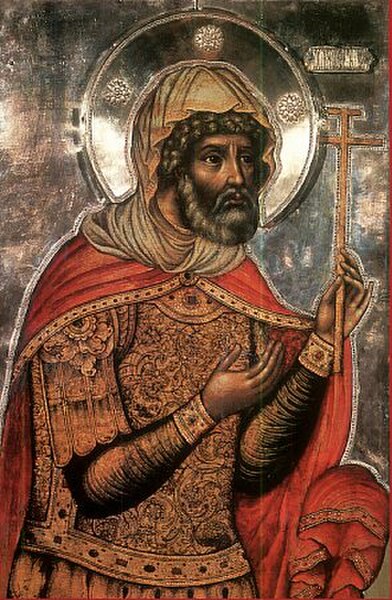The Holy Lance, also known as the Lance of Longinus, the Spear of Destiny, or the Holy Spear, is alleged to be the lance that pierced the side of Jesus as he hung on the cross during his crucifixion. As with other instruments of the Passion, the lance is only briefly mentioned in the Christian Bible, but later became the subject of extrabiblical traditions in the medieval church. Relics purported to be the lance began to appear as early as the 6th century, originally in Jerusalem. By the Late Middle Ages, relics identified as the spearhead of the Holy Lance had been described throughout Europe. Several of these artifacts are still preserved to this day.
Fresco by Fra Angelico, Dominican monastery at San Marco, Florence, showing the lance piercing the side of Jesus on the cross (c. 1440)
Miniature of the Crucifixion from the Rabula Gospels. "Loginos" is depicted piercing the right side of Jesus with a spear.
Statue of Saint Longinus by Gianlorenzo Bernini (1638)
Tomb of Pope Innocent VIII
Longinus is the name given to the unnamed Roman soldier who pierced the side of Jesus with a lance; who in medieval and some modern Christian traditions is described as a convert to Christianity. His name first appeared in the apocryphal Gospel of Nicodemus. The lance is called in Christianity the "Holy Lance" (lancea) and the story is related in the Gospel of John during the Crucifixion. This act is said to have created the last of the Five Holy Wounds of Christ.
Statue of Saint Longinus by Bernini in Saint Peter's Basilica
Illustration from the Rabbula Gospels, AD 586: Longinus is labelled "ΛΟΓΙΝΟϹ".
Longinus the Centurion. Russian icon by Fyodor Zubov, 1680.
Christ on the Cross, the three Marys, John the Evangelist, and Saint Longinus








